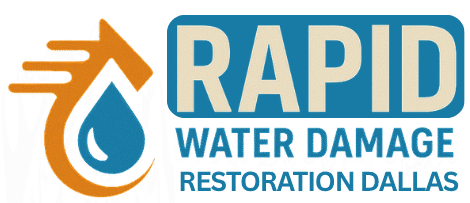When mold appears in your home or business, it can cause significant concerns. Effective and thorough Mold Remediation Dallas TX services are crucial to protect your property and the health of its occupants. Mold is a type of fungus that grows in damp environments. It can spread quickly through a building once it finds a moisture source. Addressing mold promptly and correctly prevents its return and safeguards your indoor air quality. Our team provides comprehensive services designed to tackle mold problems head-on, ensuring a clean and safe environment for residents and businesses across Dallas, Texas.
Understanding Mold: What It Is and Why It Grows
Mold is a natural part of our environment. Tiny mold spores float in the air everywhere, both indoors and outdoors. These spores are harmless until they land on a wet surface inside a building. When they find moisture, warmth, and a food source like wood, drywall, or fabric, they begin to grow and multiply. This growth creates colonies that can appear as fuzzy spots, discoloration, or slimy patches. Mold can be black, green, white, or even orange. It often has a distinct musty or earthy smell.
In places like Dallas, Texas, the climate can sometimes contribute to mold growth. High humidity levels, especially during warmer months, create ideal conditions for mold if homes are not properly ventilated or if water leaks go unnoticed. Common sources of moisture that lead to mold include leaky roofs, burst pipes, overflowing sinks, condensation on windows, and even high indoor humidity from cooking or showering. Any area that stays wet for more than 24 to 48 hours is at risk for mold growth. It is important to fix moisture problems quickly to stop mold from taking hold.
Recognizing the Signs of Mold Infestation
Identifying mold early can prevent larger problems. Sometimes mold is easy to see, but often it hides behind walls, under flooring, or in attics and crawl spaces. Knowing the common signs helps you act fast. If you suspect mold, do not wait to investigate.
- Musty Odor: A persistent, earthy, or musty smell is often the first sign of hidden mold. This smell can be strong even if you cannot see the mold.
- Visible Growth: Look for fuzzy, slimy, or discolored patches on walls, ceilings, floors, or furniture. Mold can look like dirt or soot at first.
- Water Stains or Discoloration: Stains on walls or ceilings, especially after a leak or flood, can mean mold is growing behind the surface.
- Peeling Paint or Wallpaper: Moisture trapped behind paint or wallpaper can lead to bubbling, peeling, or cracking, creating a perfect environment for mold.
- Allergy-like Symptoms: If people in your home experience unexplained sneezing, coughing, itchy eyes, skin rashes, or breathing difficulties, especially when indoors, mold could be the cause.
These signs indicate a need for professional inspection. A thorough check by experts can pinpoint the exact location and extent of the mold issue, even if it is not visible.
The Professional Mold Remediation Process
Mold remediation is more than just cleaning. It is a detailed process to safely remove mold, prevent its spread, and address the moisture source that caused it. Our professional approach follows industry best practices to ensure your property is restored to a healthy condition. This process involves several critical steps, each designed to tackle a specific aspect of the mold problem effectively.
Step 1: Thorough Inspection and Assessment
The first step in effective mold remediation is a comprehensive inspection. Our trained technicians use specialized equipment to identify the extent of the mold growth and locate the moisture source feeding it. This might involve using moisture meters to detect hidden dampness within walls or under floors. We also assess the type of materials affected and how deeply the mold has penetrated. Understanding the full scope of the problem is essential for creating an effective remediation plan. This detailed assessment allows us to tailor our approach specifically to your property’s unique needs, ensuring no mold is left behind.
Step 2: Containment of the Affected Area
Once we identify the mold, we set up containment barriers to prevent mold spores from spreading to unaffected parts of your property during the removal process. This usually involves sealing off the work area with plastic sheeting and using negative air pressure machines. These machines create a vacuum, pulling air from clean areas into the contaminated area and then venting it outside through HEPA filters. This stops spores from escaping and contaminating other rooms. Containment is a critical step because mold spores are easily airborne and can quickly spread throughout a building, creating new mold problems elsewhere.
Step 3: Air Filtration and Purification
While containment is in place, we use powerful air scrubbers equipped with HEPA filters. These machines continuously filter the air within the contained area, capturing microscopic mold spores and other airborne particles. This process significantly improves the air quality and reduces the concentration of mold spores, making the environment safer for the remediation team and preventing cross-contamination. Air filtration continues throughout the entire remediation process to ensure that the air remains clean and free of harmful particles.
Step 4: Safe Mold Removal and Cleaning
With containment and air filtration established, we begin the actual mold removal. Our technicians use specialized cleaning agents and techniques to safely remove mold from affected surfaces. Porous materials like drywall, insulation, and carpet that have significant mold growth often need to be removed and properly disposed of, as mold can deeply penetrate these materials. Non-porous surfaces like glass or metal can usually be cleaned thoroughly. We scrub, wipe, and treat surfaces to eliminate mold colonies. All removed materials are double-bagged and sealed before being taken out of your property, preventing any further spread of spores. This step requires careful attention to detail to ensure all visible and hidden mold is addressed.
Step 5: Drying, Sanitization, and Restoration
<
After mold removal, the affected areas must be thoroughly dried. We use industrial-grade dehumidifiers and air movers to remove any remaining moisture from the air and structural materials. This step is vital to prevent mold from returning. Once dry, we sanitize the affected areas to eliminate any lingering mold odors and kill any remaining microscopic spores. This sanitization process helps ensure the air is clean and fresh. Finally, we perform any necessary restoration work, which might include repairing or replacing drywall, flooring, or painting, to bring your property back to its pre-mold condition. Our goal is to leave your Dallas property clean, dry, and safe.
Strategies for Preventing Future Mold Growth
Preventing mold from returning is just as important as removing it. Once the remediation process is complete, taking steps to control moisture in your home or business is key. Consistent prevention helps maintain a healthy indoor environment and protects your property investment. Many simple actions can make a big difference in keeping mold at bay.
- Control Humidity Levels: Aim to keep indoor humidity below 60%. Use dehumidifiers in damp areas like basements or crawl spaces, especially during humid seasons in Dallas County, Texas. Proper ventilation in bathrooms and kitchens is also important.
- Fix Leaks Promptly: Repair any plumbing leaks, roof leaks, or foundation cracks immediately. Even small leaks can lead to significant mold growth if left unaddressed. Check pipes regularly for drips or signs of moisture.
- Ensure Proper Ventilation: Use exhaust fans in bathrooms and kitchens when showering or cooking to remove moisture. Open windows when weather permits to allow fresh air to circulate. Make sure your clothes dryer vents outside, not into your attic or crawl space.
- Clean and Dry After Water Events: If flooding occurs or a pipe bursts, clean and dry all affected areas within 24 to 48 hours. This quick response time is critical to prevent mold from starting to grow.
- Improve Air Circulation: Arrange furniture to allow air to circulate around walls and prevent moisture buildup. Avoid over-packing closets, as this can trap moisture.
- Maintain Gutters and Downspouts: Ensure your gutters are clean and direct water away from your foundation. Clogged gutters can cause water to pool around your home’s base, leading to moisture issues inside.
By following these prevention tips, you create an environment that is less hospitable to mold, reducing the risk of future infestations and protecting your property in Dallas, TX.
Why Professional Mold Remediation is Essential
Attempting to remove mold yourself, especially large or hidden infestations, can be risky and often ineffective. Mold spores can spread easily, and improper cleaning can worsen the problem or expose you to health hazards. Professional mold remediation offers several key advantages that ensure the job is done right and safely.
Our experienced technicians have the knowledge and specialized equipment to handle mold safely and effectively. We understand the science behind mold growth and how to stop it at its source. We use personal protective equipment (PPE) like respirators and protective suits to prevent exposure to mold spores during the cleanup process. Our team also has the right tools for containment, air filtration, and thorough cleaning, which are not typically available to homeowners. This ensures that mold spores do not spread to other areas of your home or business while we work.
Furthermore, professionals can identify and address the underlying moisture issues that caused the mold in the first place. Without fixing the moisture source, mold will likely return. Our comprehensive approach means we not only remove the mold you see but also treat the conditions that allow it to thrive. This thoroughness provides a long-term solution, giving you peace of mind and protecting your property’s value. Choosing professional services for mold remediation in Dallas, TX, ensures a healthier environment for everyone.


